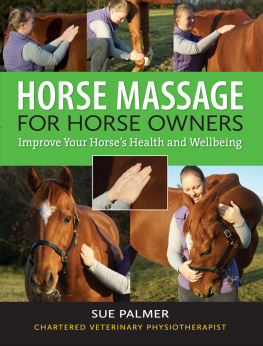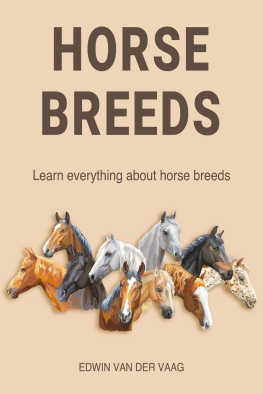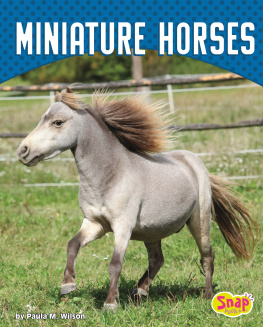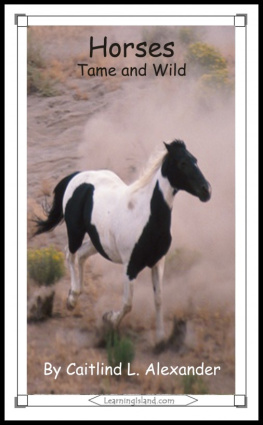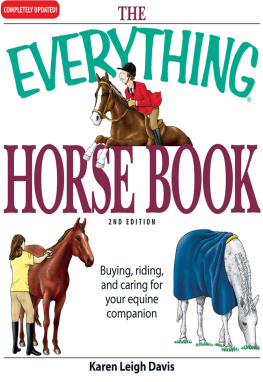KNOWING HORSES

KNOWING HORSES
Q&As to Boost Your Equine IQ
LES SELLNOW & CAROL A. BUTLER
Illustrations by Elara Tanguy

The mission of Storey Publishing is to serve our customers by publishing practical information that encourages personal independence in harmony with the environment.
Edited by Lisa H. Hiley
Art direction and book design by Cynthia N. McFarland
Cover design by Alethea Morrison
Text production by Jennifer Jepson Smith
Illustrations by Elara Tanguy
Cover photograph by Mark J. Barrett
Wyoming license plate reproduced with permission from the State of Wyoming
Indexed by Nancy D. Wood
2012 by Carol A. Butler and Les Sellnow
All rights reserved. No part of this book may be reproduced without written permission from the publisher, except by a reviewer who may quote brief passages or reproduce illustrations in a review with appropriate credits; nor may any part of this book be reproduced, stored in a retrieval system, or transmitted in any form or by any means electronic, mechanical, photocopying, recording, or other without written permission from the publisher.
The information in this book is true and complete to the best of our knowledge. All recommendations are made without guarantee on the part of the author or Storey Publishing. The author and publisher disclaim any liability in connection with the use of this information.
Storey books are available for special premium and promotional uses and for customized editions. For further information, please call 1-800-793-9396.
Storey Publishing
210 MASS MoCA Way
North Adams, MA 01247
www.storey.com
Printed in the United States by Versa Press
10 9 8 7 6 5 4 3 2 1
LIBRARY OF CONGRESS CATALOGING-IN-PUBLICATION DATA
Sellnow, Les.
Knowing horses / by Les Sellnow and Carol A. Butler.
p. cm.
Includes index.
ISBN 978-1-60342-798-2 (pbk. : alk. paper)
1. Horses. 2. HorsesBehavior. 3. HorsesTraining.
4. HorsesHistory. I. Butler, Carol A., 1943 II. Title.
SF285.S436 2012
636.1dc23
2012013933
This book is dedicated to the concerned horse owners and trainers who through the years have stopped breaking horses and substituted gentle persuasion in a kind and compassionate manner.

Thanks to Frank Vigilante for suggesting to Carol that she write a book about horses and for helping her to find Les as a co-author. We enjoyed working together to create this book, and we thank our agent, Deirdre Mullane, and our editor, Lisa Hiley, for helping us get to the finish line.

CHAPTER ONE
HORSE 101
A Few Equine Essentials
O ver many thousands of years, horses have provided humankind with food, transportation, mobility, speed, and strength. They shaped our history by allowing people to spread around the globe, helping us become farmers and herders, and bringing us into the Industrial Age. But beyond the purely practical, the human imagination has always been captured by the grace, beauty, and spirit of the horse. Something elemental and deeply emotional draws us to them, inspiring artists, poets, and anyone who is intrigued by the otherness of animals.
Q Exactly what is a horse, anyway?
A A horse is an ungulate, herbivorous quadruped, which basically means it has hooves, eats grass, and has four legs. The present-day Equus ferus caballus is the only remaining subspecies of the formerly large and complex family called Equidae. Over the past 60 million years, the horse has evolved from a fox-sized, multi-toed creature into the large, single-toed animal found throughout the world in different colors and sizes. (See When did horses first appear on earth?, .)
Q Is there more than one species of equine?
A The approximately 300 breeds of horses and ponies worldwide all belong to the same species, Equus caballus. Donkeys and asses are a different species, E. asinus. Mules are a hybrid of these two, not a separate species. The only true wild horse, the Przewalski Horse, is in a class by itself: E. ferus Przewalski. (See The Last Truly Wild Horse, .) Then there are zebras (see the facing page).
FAST FACT The quagga, a subspecies of the plains zebra once found in southern Africa, was hunted to extinction in the late nineteenth century.

From tiny Eohippus to modern Equus, the horse has come a long way. Horses are in the family Perissodactyla, or odd-toed ungulates, which makes them related to rhinoceroses and tapirs.
A HORSE BY ANY OTHER NAME
A horse is a horse, of course, of course, but depending on his gender and age, he might be called something else.
Foal. A horse of either sex who is less than 1 year old.
Weanling. A foal who is still nursing from his dam. Most horses are weaned between 4 and 6 months of age.
Yearling. A horse in the second year of his life.
Filly. A young female horse; in most countries, including the United States, a filly is 4 years old or less. In the United Kingdom and a few other countries, fillies can be up to 5 years old.
Colt. A young male horse under the age of 4.
Mare. An adult female horse.
Broodmare. An adult female horse primarily used to produce foals.
Stallion. An uncastrated adult male horse over the age of 4.
Gelding. A male horse (or donkey or mule) who has been castrated to modify potentially aggressive, sexually driven behavior.
Q Are zebras equines?
A Yes. Zebras belong to the species E. zebra. East Africa is home to very large migratory herds of plains zebras, as well as some endangered Grevys zebras. Mountain zebras, also endangered, are found in southern and southwestern Africa. The three subspecies of E. zebra rarely interbreed successfully. (See: Why dont you ever see anyone riding a zebra?, .)
Q Do horses have elbows and knees?
A The equine elbow is part of the joint structure connecting the humerus with the radius, just below the chest (see illustration on the next page). A horses elbow cant be compared to a human elbow (its elbow and its knee are on the same limb), but some parts of the equine skeleton are similar. For example, the equine radius that runs from knee to fetlock is comparable to the radius that runs from a humans elbow to wrist.

The bones in a horses knee are similar to the bones in the human wrist. A horses metacarpal bones along each side of the radius are comparable to the bones in a humans palm, and the three phalanges that comprise the bones that run from the fetlock into a horses foot are somewhat like the bones in a humans fingers.


